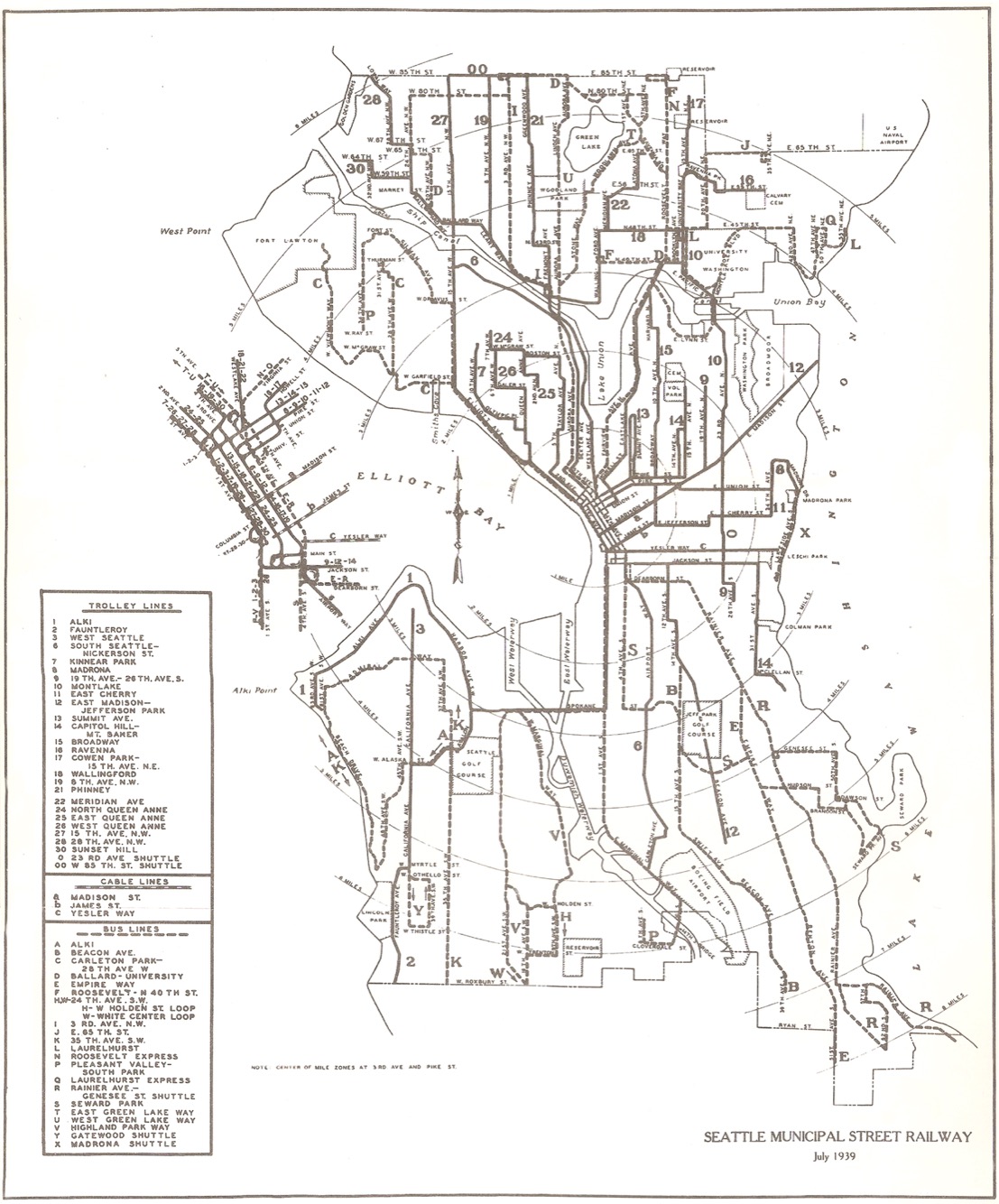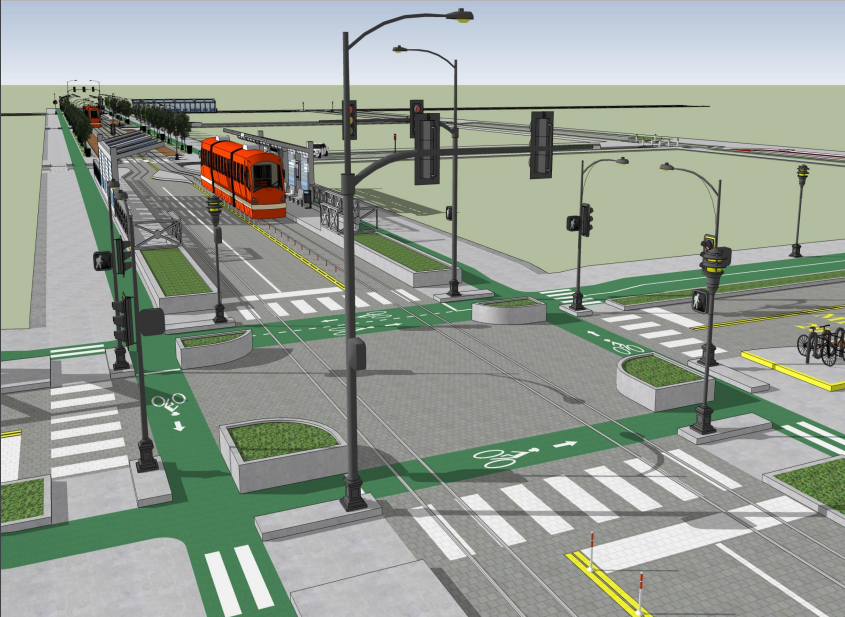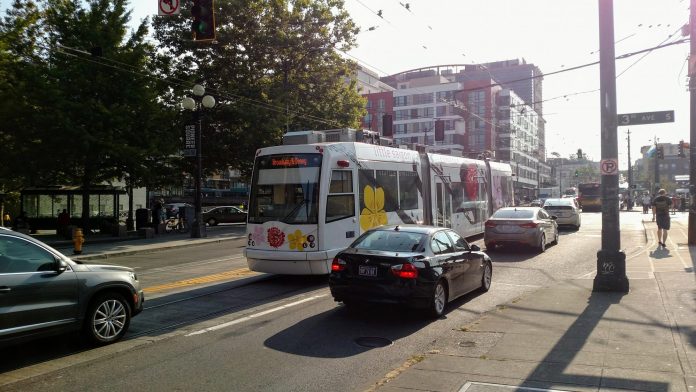‘Streetcar’ seems to be a dirty word in Seattle. In January, I proposed my own redesign of NE 65th St to the city, which received overwhelming support from Seattle’s bike and car communities alike–the Seattle Bike Blog went so far as to declare my design better than the city’s. However, one aspect of my proposal, a streetcar, stirred vigorous debate. Some flatly opposed the concept of a streetcar. Others considered it too idealistic, proposing a cheaper bus rapid transit system instead.
More recently, Mayor Jenny Durkan halted construction of the Center City Connector streetcar extension, following outcry regarding increasing project costs. The mayor’s office now claims the streetcars placed on order for this extension may not fit the tracks, which is more likely a stunt to stir opposition to the streetcar (still under pause for cost review) than an honest concern. As The Urbanist and The Seattle Times noted, both sets of streetcars–the existing streetcars and those placed on order–have a track gauge specified at an identical 1.435 meters. And, the newly-ordered cars are a requested 2.45 meters wide, actually 0.01 meters narrower than the existing ones.
Our politicians seem to spread misinformation to sway the public against streetcars. But this anti-streetcar sentiment is not justified. In fact, Seattle was built around streetcar lines. The city’s first streetcar line was built in 1884, and by 1936 Seattle’s Municipal Street Railway operated 410 streetcars on 231 miles of track–which neatly cut the city into the neighborhoods that exist today.

Buses now run along these old streetcar routes, and some routes still use the trolley wire. Roughly 64% of residents are within a 10-minute walking distance from a frequent bus line, and approximately 423,000 people ride Seattle’s buses every day, leading The Seattle Times to declare Seattle the second-most bus reliant city in the United States, just behind San Francisco.
But Seattle increasingly needs a new transportation mode to weave together its transit network–especially its new light rail spine. In peak months, Link’s daily ridership has grown to surpass 80,000–but only 15% of Seattle residents are within a 10-minute walking distance to it. While significantly fewer people are within walking distance to light rail as compared to buses, light rail ridership is growing steadily nonetheless.
This is consistent with what research tells us–people have an inherent rail bias. A study by the Berlin Institute of Technology found that 63% of subjects preferred a regional train system over an equivalent bus system, given a hypothetical choice with all other factors being equal. A second study in Switzerland found that 75% of respondents preferred trams to buses–even given identical service levels.
This rail bias bolsters the ridership of Seattle’s light rail system. But, the city lacks–and desperately needs–clear east-west connections that make the system accessible to everyone. Buses could be up to the task, but the research is in favor of rail. Streetcars are the preferred transportation mode residents need to reach light rail, for several reasons.
First, streetcars offer a more comfortable ride. While buses bounce around at the whims of Seattle’s deferred street maintenance, streetcar rails guarantee a smooth ride. All-door level boarding also makes peak-hour boarding and unloading a cinch, even for people with mobility challenges.

Second, streetcars offer greater passenger capacity than buses. In Portland, Oregon, each streetcar cabin has a maximum capacity of 92 riders–only the largest articulated buses approach that. A standard 40-foot bus typically maxes out at 50 to 60 passengers. That means fewer rail vehicles could potentially transport the same number of passengers, reducing operating costs. If a route has been planned with expansion in mind, streetcars can also be attached together if ridership demands it. Two-car streetcars may be well suited for east-west routes that would connect large neighborhoods to the city’s light rail spine–corridors like Denny Way (Route 8), N/NE 45th St (Route 44), and N/NE 65th St (Route 62) come to mind. A Columbia City to Alaska Junction streetcar is also a possibility, upgrading Route 50.
Third, streetcars attract greater ridership thanks to the aforementioned rail bias. As a result, they not only attract more transit riders, but also new transit riders. Between 2000 and 2003, bus stops within a sixth of a mile of Portland’s first streetcar line saw ridership drop by 20% when rail went online. Meanwhile, ridership on the new streetcar grew well beyond that drop, indicating the system was attracting more than just former bus riders.
Fourth, streetcars advertise themselves better. Few Seattle residents, including daily bus riders, could point at a given bus stop and identify what routes pass through it. Fewer could identify a bus route based on the route number. Streetcar rails implant their route directly onto the road–creating a system that is easier to understand for tourists and residents alike due to the tracks providing a visual reminder of the route.
Finally, streetcars are excellent investments. Portland’s streetcars cost 53% less per boarding than buses, and according to a report commissioned by Portland Streetcar Incorporated, streetcars have exacted $4.5 billion dollars of economic investment in the city. While Portland’s first streetcar line, a 4.8-mile-long loop that opened in 2001, cost $54.6 million dollars to construct, the city’s economy received a 4,112% return on its investment through new development in the area. And, the citywide market value of its corridor increased from 11% to 17% in just 15 years. That economic value is partly a reflection of already in motion trends increasing the value of Downtown Portland and Pearl District real estate, but it’s also a testament to the catalyst that the streetcar was for redevelopment and the economy.
Streetcars incentivize dense, transit-oriented development. They attract more riders and carry more people. They are quieter, and they run on clean Pacific Northwest electricity. Seattle is built for streetcars. Seattle’s bus routes are clearly effective, but streetcars are the transportation mode needed to tie together Seattle’s transit network even more effectively. Seattle needs streetcars.
Joe Mangan is a junior at Roosevelt High School who fell in love with trams and cycletracks while visiting Amsterdam. He’s been using Sketchup design software since the second grade and is currently working to design a backyard cottage for his family to build and rent out.
NE 65th Street Needs a Heavy Dose of Vision Zero, Here’s How
Joe Mangan (Guest Contributor)
Joe Mangan is an urban studies and political science double major at Vassar College. He organized the Seattle Climate Strike, led weekly strikes outside Seattle City Hall as the founder of Fridays for Future Seattle, and was later a coordinator with the Seattle for a Green New Deal campaign. His redesign of NE 65th Street was declared “Better Than SDOT’s” by the Seattle Bike Blog.

